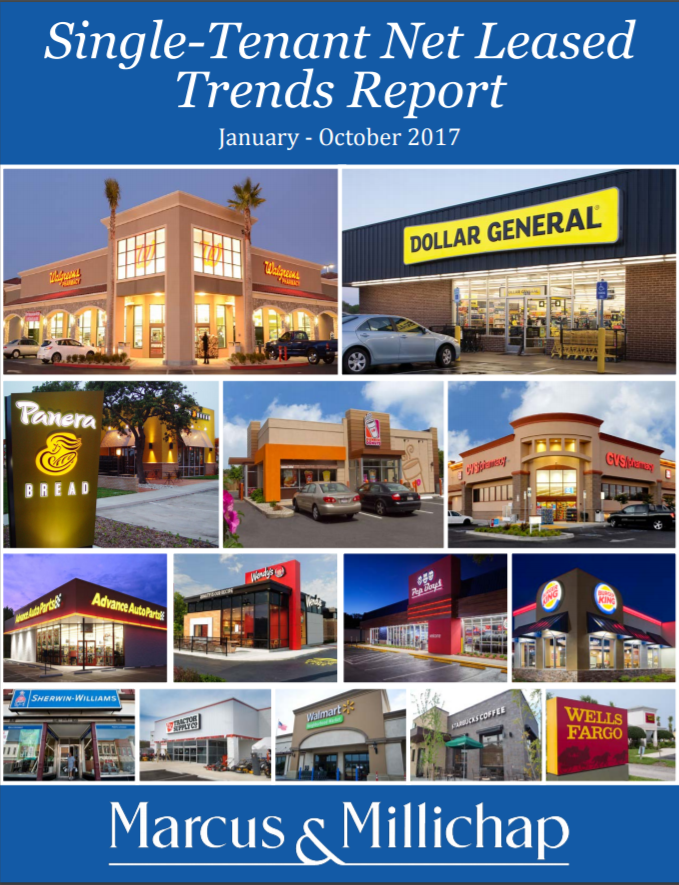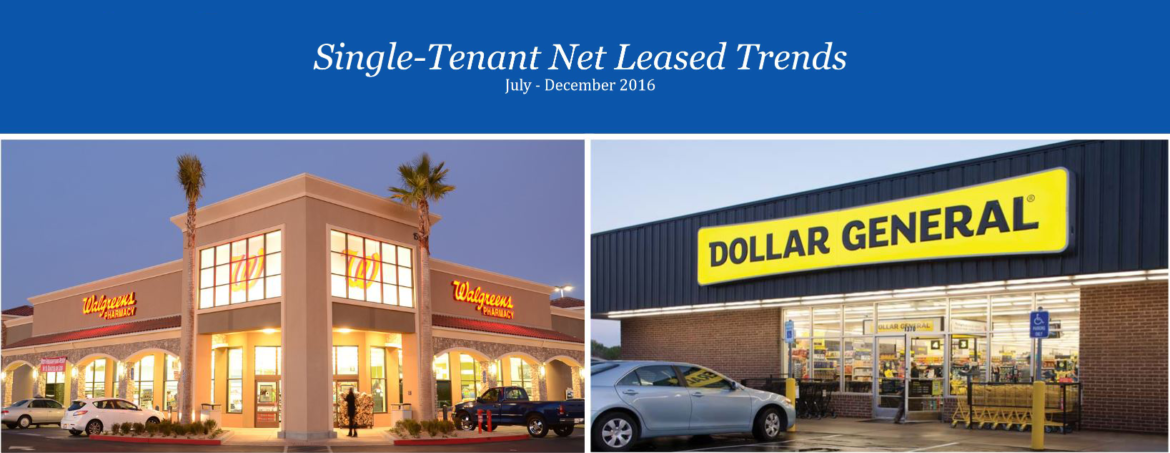
The Wolfe Retail Group of Marcus & Millichap is proud to present our most recent Single-Tenant Net-Leased Trends Report, January-October 2017. This year, the retail landscape has experienced unprecedented change with major moves by online giants that included acquisitions, expansion, and offline territory encroachment. Meanwhile, moves by major offline players across the spectrum of categories have ranged from withering to aggressive action to take advantage of the opportunity presenting itself in the market. In this report, we look at cap rates for leading brands in several of the retail industry’s top-performing categories, as well as S&P credit ratings, estimated sales per square foot, and YOY average cap rates to identify possible trends.
Barry Wolfe, of the Wolfe Retail Group of Marcus & Millichap, provides a quick intro in this video.

Segments include:
- Beauty/Health/Drugstore
- Dollar Stores
- Auto Parts
- Coffee/Bakery
- Restaurants (QSR/Fast Casual)
- Banks
- Wireless
- Others
Download the Single-Tenant Net Leased Trends Report now.



